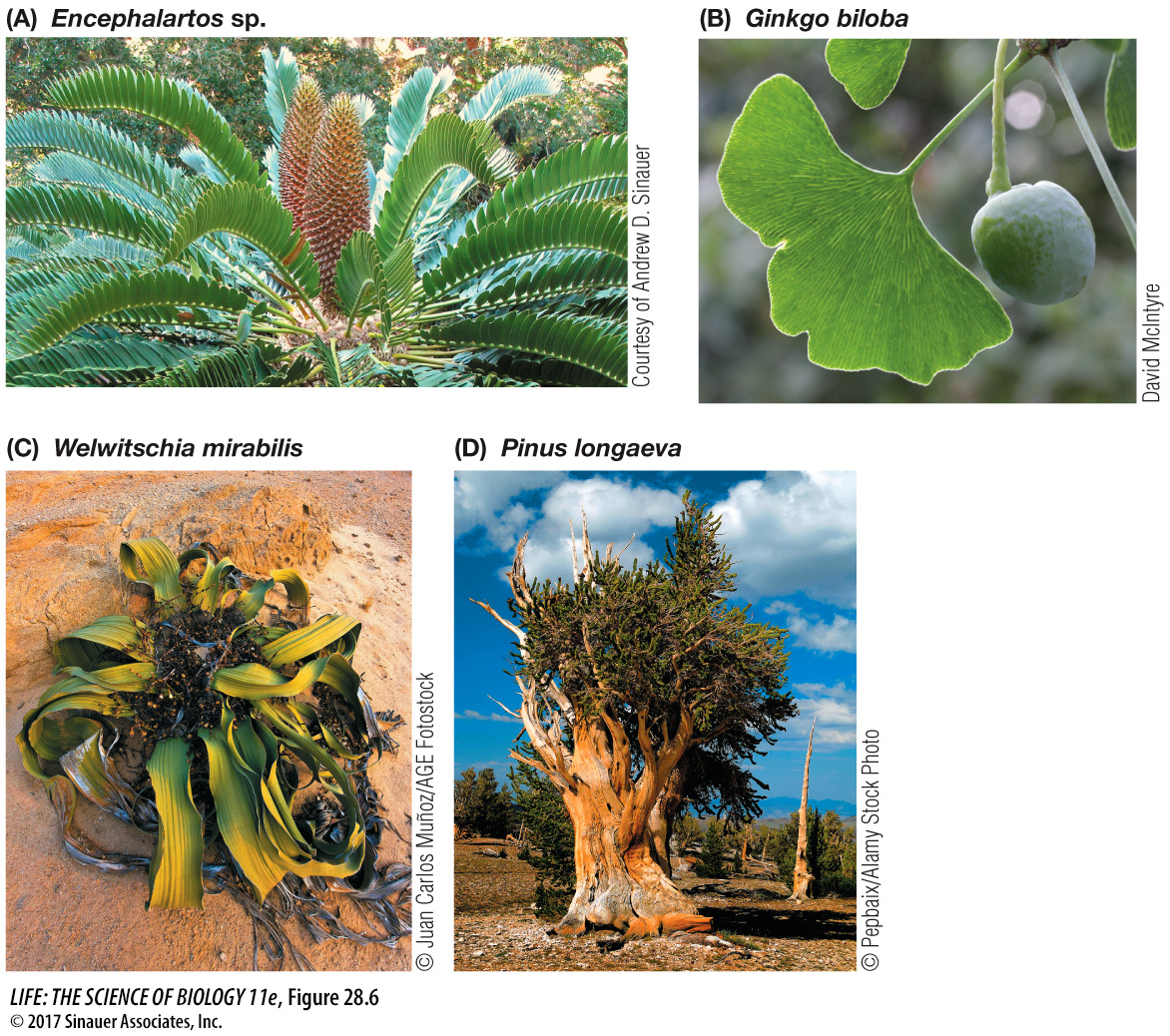There are four major groups of living gymnosperms
The living gymnosperms can be divided into four major groups (see Figure 27.1):
Cycads are palmlike plants of the tropics and subtropics (Figure 28.6A). Of the present-
day gymnosperms, the cycads are probably the earliest- diverging clade. There are about 300 species, some of which grow as tall as 20 meters. The tissues of many species are highly toxic to humans if ingested. Ginkgos, common during the Mesozoic era, are represented today by a single species, Ginkgo biloba, the maidenhair tree (Figure 28.6B). There are both male and female maidenhair trees. The difference is determined by X and Y sex chromosomes, as in humans; few other plants have distinct sex chromosomes.
Gnetophytes number about 90 species in three very different genera, which share certain characteristics analogous to ones found in the angiosperms. One of the gnetophytes is Welwitschia (Figure 28.6C), a long-
lived desert plant with straplike leaves that sprawl on the sand and can grow as long as 3 meters. Conifers are by far the most abundant of the gymnosperms. There are about 700 species of these cone-
bearing plants, including the pines and redwoods (Figure 28.6D).

With the exception of the gnetophytes, the living gymnosperm groups have only tracheids as water-
During the Permian, as environments became warmer and dryer, the conifers and cycads flourished. Gymnosperm forests changed over time as the gymnosperm groups evolved. Gymnosperms dominated the Mesozoic era, during which the continents drifted apart and large dinosaurs lived. Gymnosperms were the principal trees in all forests until about 65 million years ago, and even today conifers are the dominant trees in many forests, especially at high latitudes and elevations. The oldest living single organism on Earth today is a gymnosperm in California—